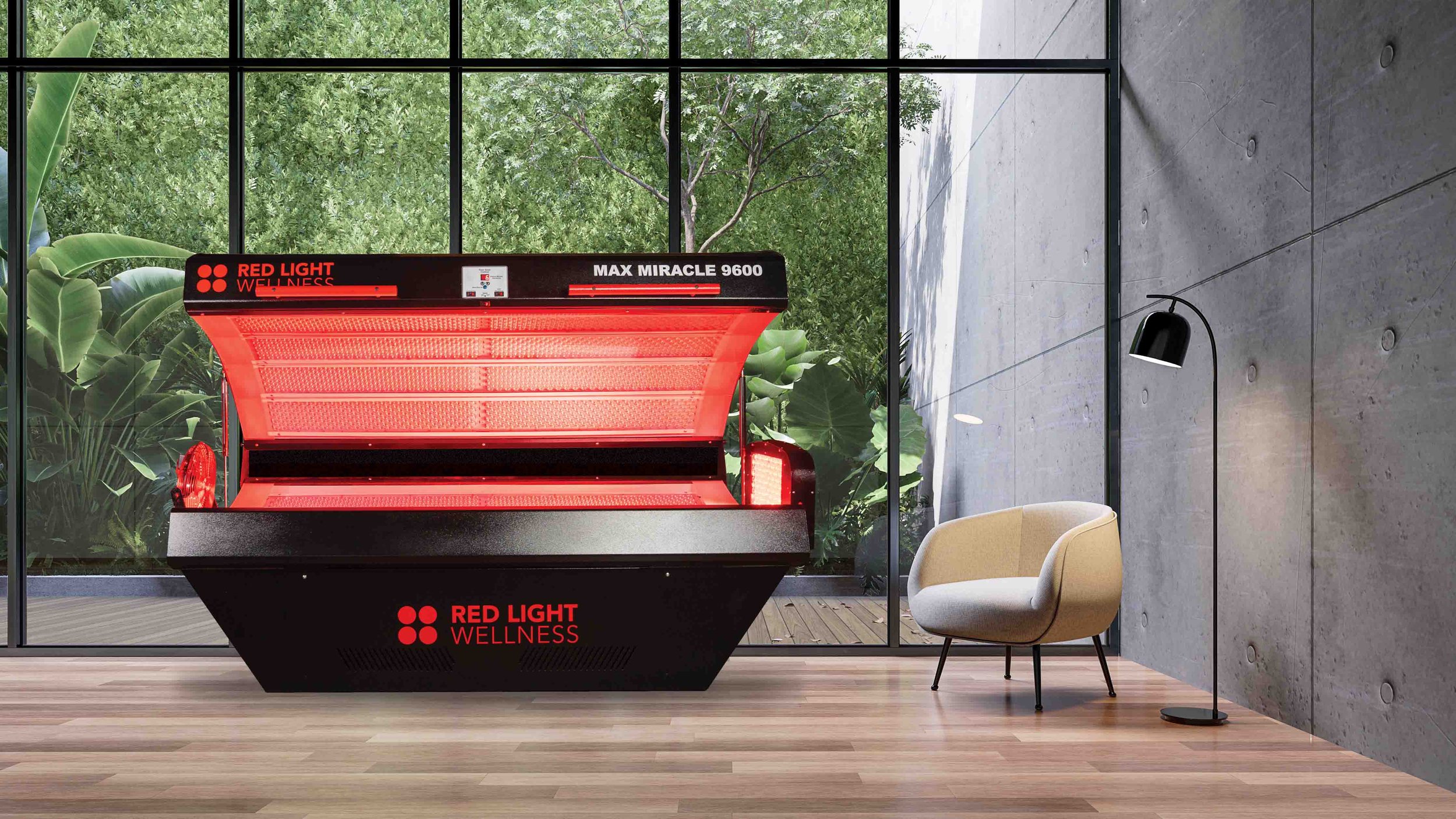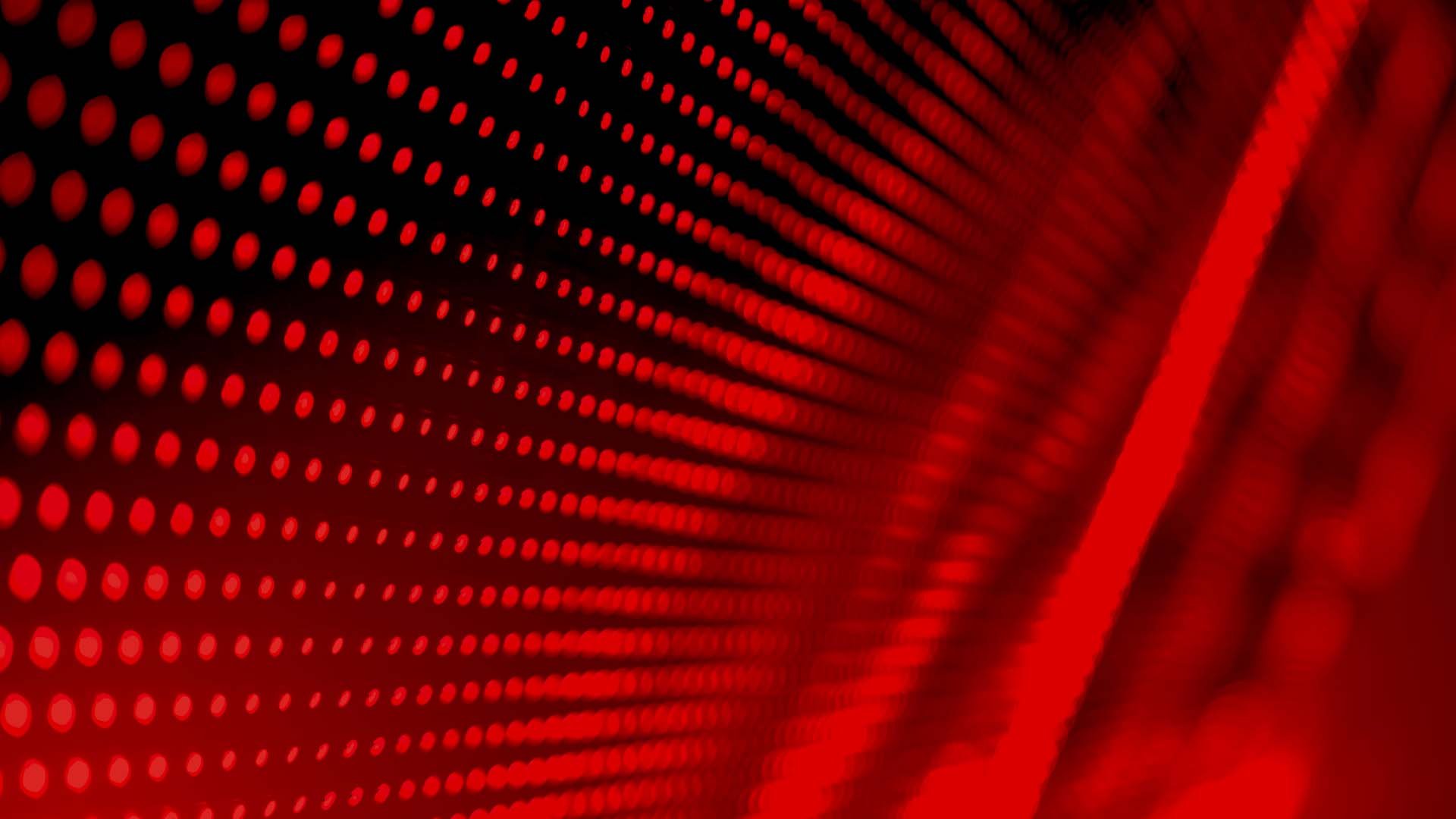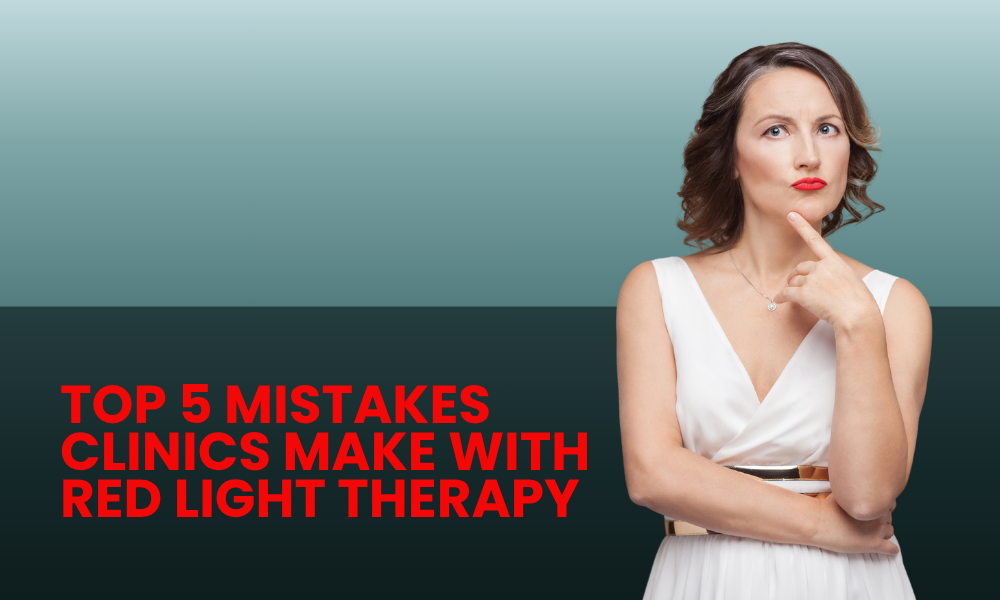Red Light Therapy Bed
Red light therapy beds represent advanced photobiomodulation technology that delivers therapeutic wavelengths across the entire body simultaneously. These medical devices have become essential tools in healthcare settings due to their ability to stimulate cellular healing through scientifically-proven mechanisms.
Understanding how red light therapy beds work, their clinical applications, and safety considerations is crucial for healthcare professionals considering this therapeutic modality.
What Is a Red Light Therapy Bed?
A red light therapy bed is a medical device that delivers therapeutic light wavelengths across the entire body simultaneously. These sophisticated systems use arrays of LED lights positioned above and below the treatment surface to provide 360-degree photobiomodulation therapy.
Key Characteristics of Professional Red Light Therapy Beds:
Full-Body Coverage: Unlike targeted devices, beds treat the entire body in a single session, ensuring comprehensive therapeutic benefits.
Dual Wavelength Technology: Most professional beds combine 660nm red light and 850nm near-infrared light for optimal tissue penetration and cellular stimulation.
Medical-Grade Construction: Built to FDA Class II medical device standards for safety, reliability, and therapeutic efficacy.
Controlled Environment: Enclosed treatment chambers provide consistent light exposure while protecting users from ambient light interference.
How Red Light Beds Differ from Other Light Therapy Devices:
Red Light Beds: Full body coverage, 10-15 minute sessions, high power density, professional-grade
Light Panels: Targeted areas only, 20-30 minute sessions, requires repositioning
Handheld Devices: Small areas, multiple sessions needed, lower power output
The Science of Red Light Therapy Beds
Photobiomodulation: The Cellular Mechanism
Red light therapy beds work through a process called photobiomodulation (PBM), where specific wavelengths of light interact with cellular components to enhance biological function.
Primary Mechanism: Mitochondrial Stimulation
When red and near-infrared light photons are absorbed by cytochrome c oxidase (Complex IV) in the mitochondrial electron transport chain, several beneficial effects occur:
Increased ATP Production: Enhanced cellular energy metabolism
Nitric Oxide Release: Improved circulation and oxygen delivery
Reactive Oxygen Species Modulation: Balanced cellular stress response
Gene Expression Changes: Activation of healing and repair pathways
Therapeutic Wavelengths Explained
660nm Red Light (Visible Spectrum)
Penetration Depth: 2-4mm into tissue
Primary Targets: Skin cells, superficial tissues
Key Benefits: Collagen synthesis, wound healing, skin rejuvenation
850nm Near-Infrared Light (Invisible Spectrum)
Penetration Depth: 5-10mm into tissue
Primary Targets: Muscle, joint, and organ tissues
Key Benefits: Deep tissue healing, inflammation reduction, pain relief
Optimal Treatment Parameters
Treatment Duration: 10-15 minutes provides optimal photon dose without thermal effects Session Frequency: 3-5 sessions per week for acute conditions, 2-3 for maintenance Power Density: Professional beds deliver ≥100 mW/cm² for therapeutic efficacy.
Want to dive deeper into the research behind these wavelengths? Explore the complete scientific foundation →
Clinically Documented Benefits of Red Light Therapy Beds
Musculoskeletal Applications
Pain Management
Mechanism: Reduced inflammatory cytokines, enhanced endorphin release Clinical Evidence: Meta-analyses show significant pain reduction in chronic conditions Applications: Arthritis, fibromyalgia, chronic back pain, joint disorders
Muscle Recovery and Performance
Mechanism: Enhanced mitochondrial function, reduced oxidative stress Clinical Evidence: Improved exercise performance and faster recovery times Applications: Sports medicine, physical therapy, athletic training
Dermatological Applications
Skin Rejuvenation and Anti-Aging
Mechanism: Stimulated collagen and elastin production, improved cellular turnover Clinical Evidence: Reduced wrinkles, improved skin texture and tone Applications: Aesthetic medicine, anti-aging treatments, post-procedure healing
Wound Healing
Mechanism: Enhanced fibroblast activity, improved angiogenesis Clinical Evidence: Accelerated healing rates in chronic and acute wounds Applications: Post-surgical recovery, diabetic ulcers, slow-healing wounds
Neurological Applications
Neuropathy Relief
Mechanism: Improved nerve conduction, reduced inflammation Clinical Evidence: Significant improvement in peripheral neuropathy symptoms Applications: Diabetic neuropathy, chemotherapy-induced neuropathy
Systemic Wellness Benefits
Circulation Enhancement
Mechanism: Nitric oxide release, improved endothelial function Applications: Cardiovascular health, lymphatic drainage, general wellness
Sleep Quality Improvement
Mechanism: Circadian rhythm regulation, reduced inflammation Applications: Sleep disorders, stress management, overall wellness
🛑 Individual results may vary. Not intended to diagnose, treat, or cure any disease. Consult a healthcare professional before use.
Ready to see how these benefits translate into practice? Compare professional red light therapy bed specifications →
Safety Profile and Clinical Considerations
Established Safety Record
Red light therapy has an exceptional safety profile with minimal side effects when used according to established protocols. Decades of clinical research demonstrate its non-invasive, non-thermal nature.
Safety Features in Professional Red Light Therapy Beds
Eye Protection Protocols
UV-free wavelengths: No harmful ultraviolet radiation
Protective eyewear: Required during treatment sessions
Automatic shutoff: Prevents overexposure
Thermal Safety
Non-thermal photobiomodulation: No tissue heating effects
Temperature monitoring: Prevents excessive heat buildup
Cooling systems: Maintain optimal operating temperatures
Electrical Safety
FDA-registered components: Medical-grade electrical safety standards
Ground fault protection: Prevents electrical hazards
Emergency shutoff: Immediate treatment termination capability
Contraindications and Precautions
Absolute Contraindications
Active cancer in treatment area (consult oncologist)
Pregnancy (treatment over abdomen/pelvis)
Severe photosensitivity disorders
Relative Contraindications (Require Medical Consultation)
Photosensitizing medications
Recent steroid injections in treatment area
Active infections or fever
Implanted electronic devices (pacemakers, etc.)
Treatment Best Practices
Pre-treatment: Remove makeup, lotions, and jewelry
Hydration: Adequate water intake before and after sessions
Documentation: Treatment logs for progress monitoring
Medical consultation: Always advised for underlying health conditions
Ready to explore professional-grade red light therapy beds that meet these safety standards? View our complete collection of FDA Class II medical devices →
Professional Healthcare Applications
| Healthcare Specialty | Primary Uses | Treatment Integration | Patient Benefits | Typical Protocols |
|---|---|---|---|---|
| Chiropractic Medicine | Pain management, inflammation reduction, tissue healing | Pre/post-adjustment therapy, chronic pain protocols | Enhanced treatment outcomes, reduced recovery time | 2-3 sessions per week, combined with manual therapy |
| Physical Therapy and Rehabilitation | Muscle recovery, joint mobility, post-injury healing | Part of comprehensive rehabilitation programs | Accelerated healing, improved function, pain relief | Daily sessions during acute phase, maintenance thereafter |
| Functional and Integrative Medicine | Systemic wellness, mitochondrial support, anti-aging | Holistic health optimization programs | Enhanced cellular function, improved energy, overall wellness | Regular maintenance sessions, personalized frequency |
| Aesthetic and Medical Spas | Skin rejuvenation, anti-aging, post-procedure healing | Standalone treatments or combined with other modalities | Improved skin quality, reduced signs of aging | Weekly sessions for aesthetic goals, intensive for specific concerns |
| Sports Medicine and Athletic Performance | Performance enhancement, injury prevention, recovery acceleration | Pre/post-training protocols, injury rehabilitation | Faster recovery, improved performance, injury prevention | Daily use during training, intensive during recovery phases |
Treatment Protocol Development
| Step | Description |
|---|---|
| 1. Initial Consultation | Medical history, current symptoms, treatment goals |
| 2. Baseline Measurements | Pain scales, functional assessments, photos (if applicable) |
| 3. Protocol Selection | Frequency, duration, and adjunct therapies |
| 4. Progress Monitoring | Regular reassessment and protocol adjustments |
Seeing how red light therapy could fit into your practice? Compare professional red light therapy bed models to find the right solution →
Red Light Beds vs Other Light Therapy Devices: Understanding the Differences
Treatment Coverage and Efficiency Red Light Therapy Beds: Provide full-body 360-degree coverage in a single session, ensuring uniform light distribution across all treatment areas.
Light Panels: Require multiple positioning changes to treat the entire body, leading to uneven coverage and longer treatment times.
Handheld Devices: Limited to small treatment areas, requiring numerous sessions to achieve comprehensive coverage.
Professional vs Consumer Applications: Red light therapy beds are engineered for clinical environments with medical-grade components, consistent power output, and safety features required for professional healthcare settings.
Consumer devices typically offer lower power density and lack the durability needed for high-volume clinical use.
Understanding Red Light Therapy Beds: Key Takeaways
Red light therapy beds represent the pinnacle of photobiomodulation technology, offering healthcare professionals a safe, non-invasive therapeutic modality with extensive clinical evidence supporting its efficacy.
Essential Points to Remember
Scientific Foundation: Based on well-established cellular mechanisms and extensive clinical research
Safety Profile: Excellent safety record with minimal contraindications when used appropriately
Versatile Applications: Effective across multiple medical specialties and patient populations
Professional Integration: Easily incorporated into existing treatment protocols and practice workflows
The Biphasic Dose Response
Red light therapy follows the Arndt-Schulz law:
Insufficient Dose: No therapeutic effect
Optimal Dose: Maximum biological benefit
Excessive Dose: Diminished or inhibitory effects
Professional red light therapy beds are engineered to deliver consistent optimal dosing across the entire treatment surface.
Continuing Your Red Light Therapy Education
For Deeper Scientific Understanding: Explore the complete research foundation and clinical studies →
For Professional Implementation: Compare professional red light therapy bed specifications and features →
For Practice Integration Support: Learn about our comprehensive training and support programs →
This educational resource is provided for informational purposes only and should not replace professional medical advice. Always consult with qualified healthcare providers for specific treatment recommendations.
Red Light Bed Frequently Asked Questions
-
A full-body device that uses LED light to stimulate natural healing and rejuvenation.
-
3–5 sessions per week depending on the condition and protocol.
-
Yes. Our beds are made with FDA-registered components and come with protective eyewear and built-in safety features.
-
Red light beds use non-thermal, non-UV wavelengths designed for healing, not sweating or tanning.
-
Panels treat small areas and require repositioning. Our beds offer full-body, hands-free sessions at higher power levels and better consistency.
-
Clients typically experience reduced pain, faster recovery, better sleep, and improved skin within 3–6 weeks of consistent use.
-
Yes — we offer flexible financing options to make integration seamless for new and established businesses.
-
What is the difference between red and near-infrared light?
Red light targets skin-level repair (620–660nm), while near-infrared penetrates deeper (800–850nm) into muscles, joints, and organs.
-
Yes. FDA Class II clearance means the device meets rigorous standards for non-invasive therapeutic application.
-
10–20 minutes depending on target condition, watt density, and device specs.
-
Our light therapy bed technology delivers the highest therapeutic irradiance in the industry, enabling faster treatment times and better patient outcomes than any competitor.












